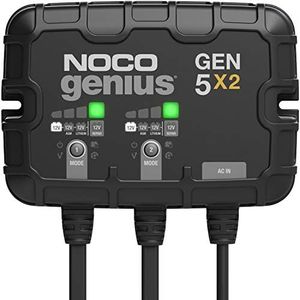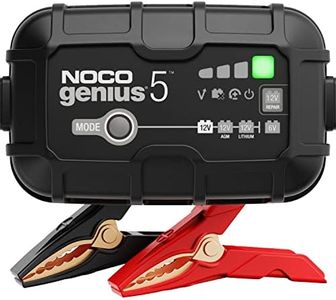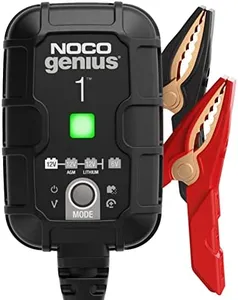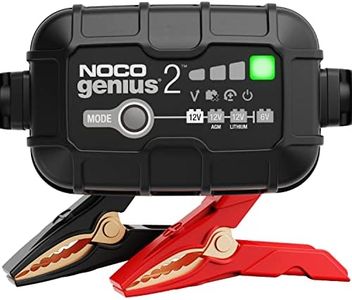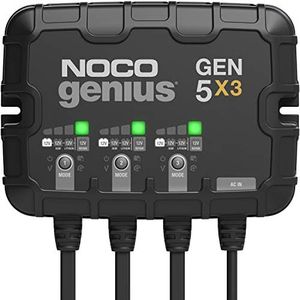10 Best Battery Chargers 2025 in the United States
Our technology thoroughly searches through the online shopping world, reviewing hundreds of sites. We then process and analyze this information, updating in real-time to bring you the latest top-rated products. This way, you always get the best and most current options available.

Our Top Picks
Winner
Anker Power Bank, 20,000mAh Travel Essential Portable Charger with Built-in USB-C Cable, 3-Port 87W Max Fast Charging Battery Pack, for MacBook, iPhone 16/15 Series, Samsung, Switch, and More
Most important from
4886 reviews
The Anker Power Bank is a 20,000mAh portable charger designed to meet the needs of users who require reliable and fast charging for multiple devices. One of its standout features is the impressive 87W total output, which allows for rapid charging of devices like the MacBook Pro and iPhones, making it a solid choice for both everyday users and professionals on the go. The built-in USB-C cable is particularly convenient, ensuring you don’t need to carry extra cables, and it’s durable enough to withstand over 10,000 bends, adding to its longevity.
This power bank is quite portable, making it easy to carry around, and it’s also airline-approved, so you can travel without worries about battery restrictions. The fast charging capabilities are another significant strength, enabling users to charge devices quickly, which is great for those with a busy lifestyle.
While the power bank offers great charging speed and capacity, it is a bit bulkier compared to smaller models, which may not be ideal for users looking for ultra-light options. Additionally, the need to share the total output with multiple charging slots can mean that charging several devices simultaneously may reduce the speed for each device slightly. Although safety features like overcharging protection are included, the reliance on a high-capacity battery means users should stay aware of using it responsibly to avoid any potential issues.
The Anker Power Bank is a strong choice for anyone needing a reliable, fast-charging, and portable solution for their devices, especially for those who frequently charge multiple gadgets. It may not suit users who prioritize ultra-compact designs, but its performance and features make it a noteworthy option in the battery charger category.
Most important from
4886 reviews
DEWALT 20V MAX Lithium-Ion Battery 2-Pack and Charger, 5.0 Ah, Battery Starter Kit (DCB205-2c)
Most important from
2175 reviews
The DEWALT 20V MAX Lithium-Ion Battery Starter Kit includes two 5.0Ah batteries and a charger designed for power tools. It supports charging across DEWALT's 12V, 20V, and 60V MAX battery lines, which makes it versatile if you already own or plan to own various DEWALT tools. The charger delivers a 4 Amp charging current, which is fairly quick for batteries of this capacity, helping reduce downtime.
Each battery provides 5 Amp hours, offering extended runtime compared to standard models, and the XR Lithium Ion technology boosts capacity by up to 60%, meaning you can work longer between charges. A handy 3-LED fuel gauge on each battery lets you easily check remaining power without guessing. Weighing only 1.4 pounds each, the batteries are lightweight and portable, making them easy to handle on job sites or for DIY projects. The charger is built with safety in mind, protecting against overcharging and overheating.
It only has one charging bay, so you can charge one battery at a time, which might slow you down if you need to keep multiple batteries ready. This kit is ideal for those invested in DEWALT tools who need reliable, long-lasting batteries and a compatible charger. It is less suited for users with non-DEWALT batteries or those requiring simultaneous multi-battery charging. With high customer ratings and a supportive 3-year warranty, this starter kit delivers a solid balance of performance and convenience for both professionals and serious DIYers.
Most important from
2175 reviews
DEWALT 20V MAX* Charger, 4-Port, Rapid Charge (DCB104) , Black/Yellow
Most important from
6530 reviews
The DEWALT 20V MAX Charger (DCB104) is solid for anyone who regularly uses DEWALT power tool batteries, especially if you have multiple batteries to charge at once. It supports 12V MAX, 20V MAX, and FLEXVOLT batteries, covering a wide range of DEWALT’s lithium-ion types, which is handy if you own different tools. With four charging ports that work simultaneously, it can charge several batteries quickly—about 40 minutes for four 20V batteries—thanks to its strong 8-amp output per port. This rapid charging helps keep your tools ready without long waits.
The charger runs at 20 volts output and includes practical features like thru-hole wall mounts, cord wraps, and compatibility with the ToughSystem storage, making it convenient to set up in a workshop. It also has ToolConnect tag readiness, adding a smart element for managing batteries if you use DEWALT’s ecosystem. However, it weighs 7.6 pounds and is fairly large, so it’s better suited for a fixed workspace rather than frequent travel. The charger doesn’t come with batteries and requires power from a corded source, so it’s less portable compared to solar or car chargers.
Its build is sturdy and designed for heavy use, backed by a 2-year warranty and safety certifications. If you need to keep multiple DEWALT batteries charged quickly and reliably in one place, this charger fits well. But if you want something lightweight or for charging non-DEWALT batteries, you might want to look elsewhere.
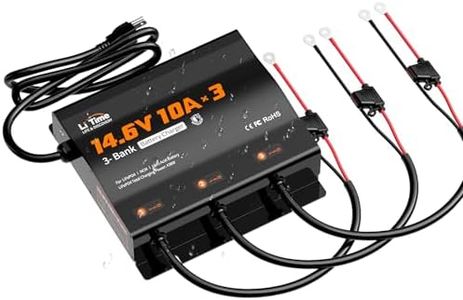

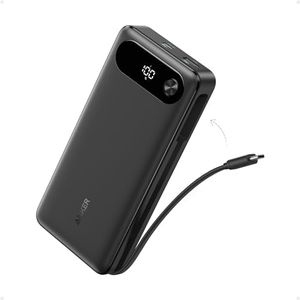


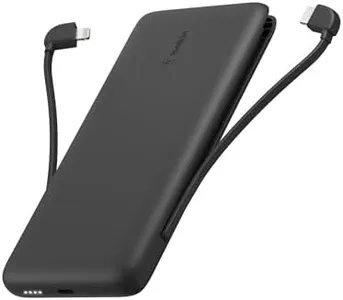

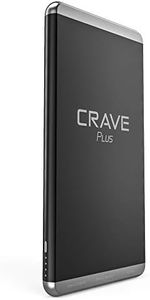
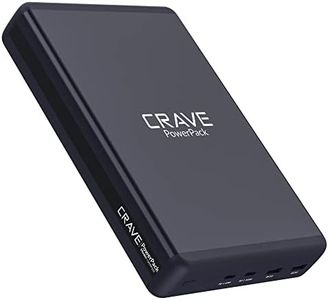
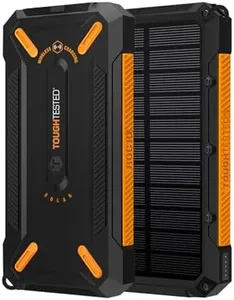
![Crave Travel PRO Power Bank with 13400 mAh [Quick Charge QC 3.0 USB + Type C with PD] Portable Battery Charger](https://images-proxy.bestreviews.guide/USQpIll3J-iWVUfdLlfHmxO0lPk=/0x300/https://m.media-amazon.com/images/I/31j6h0+dJ3L._AC_CX679_.jpg)
